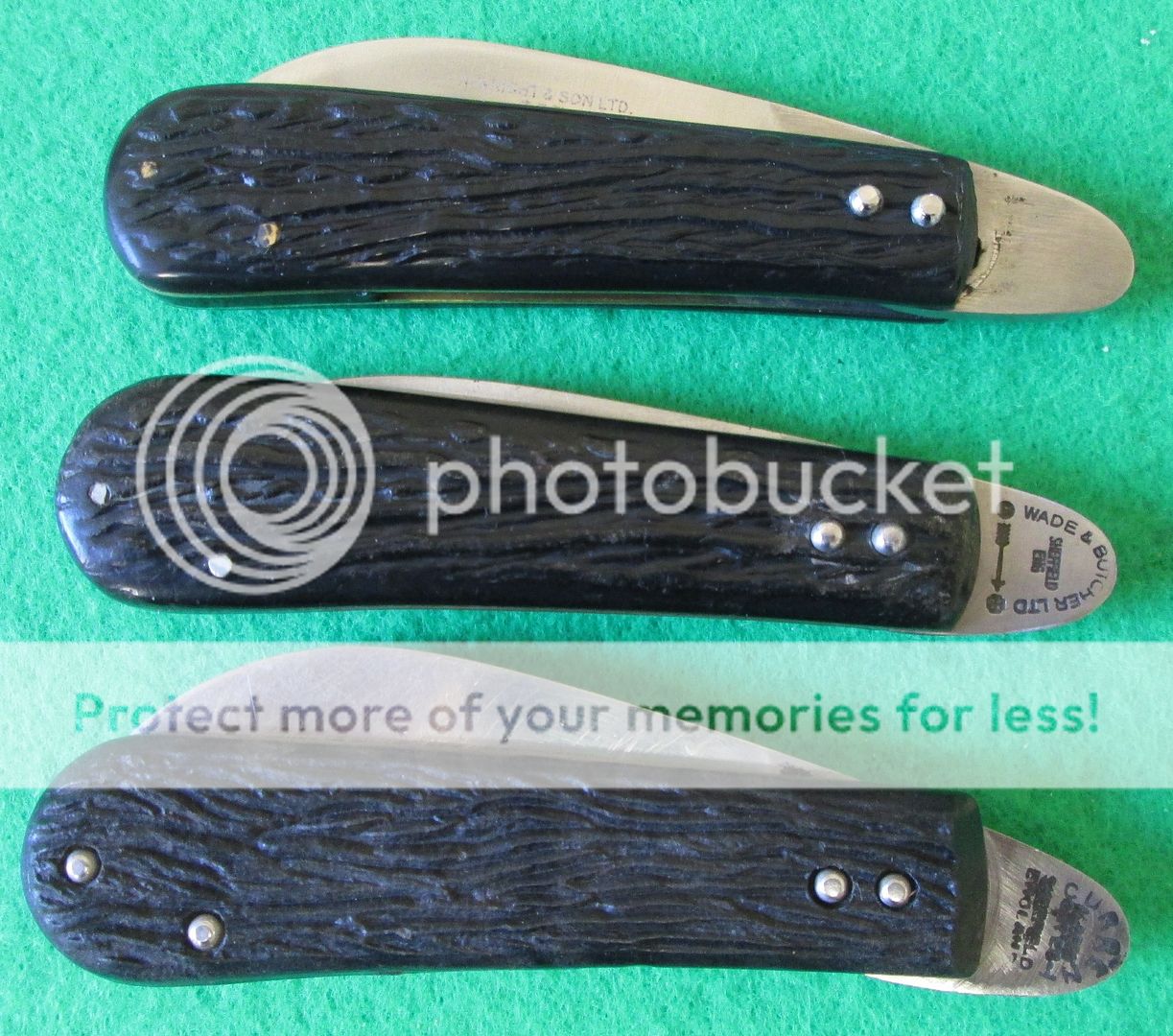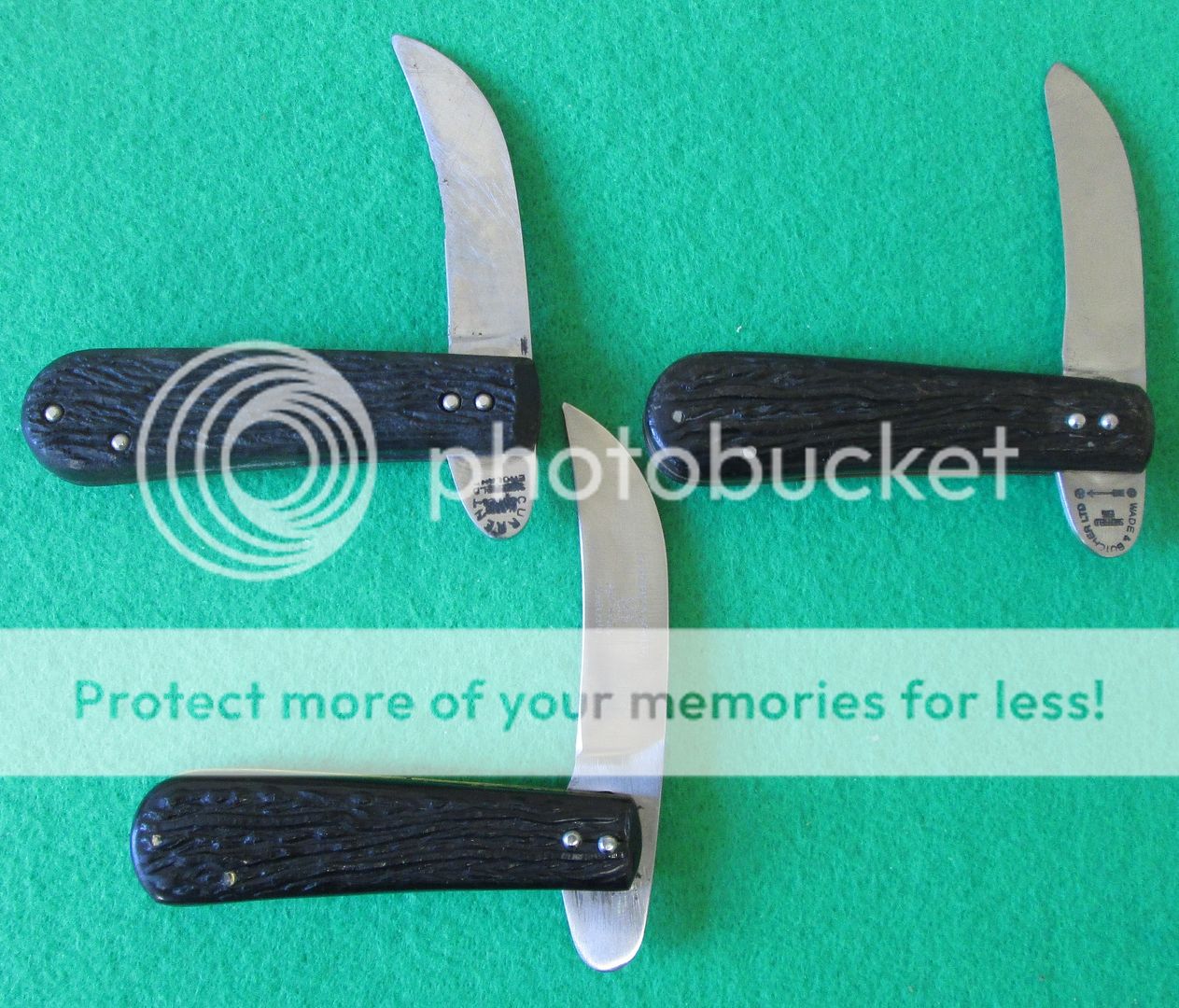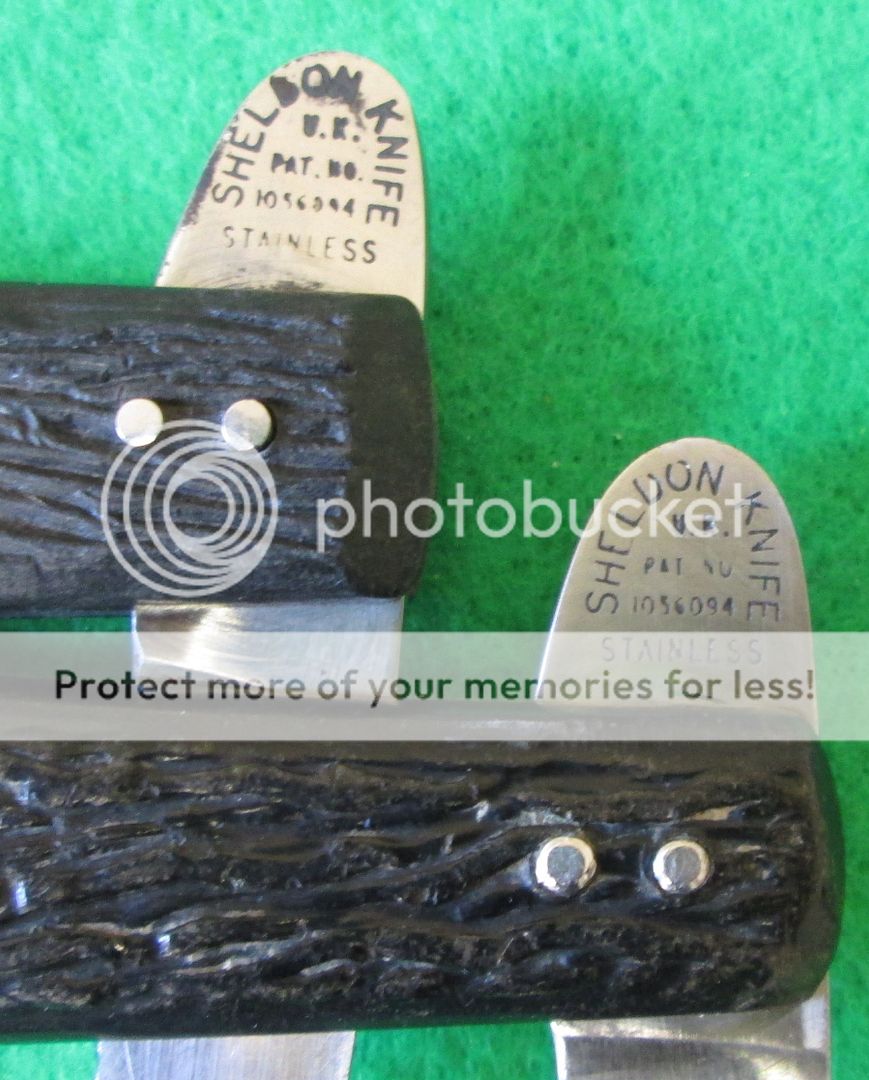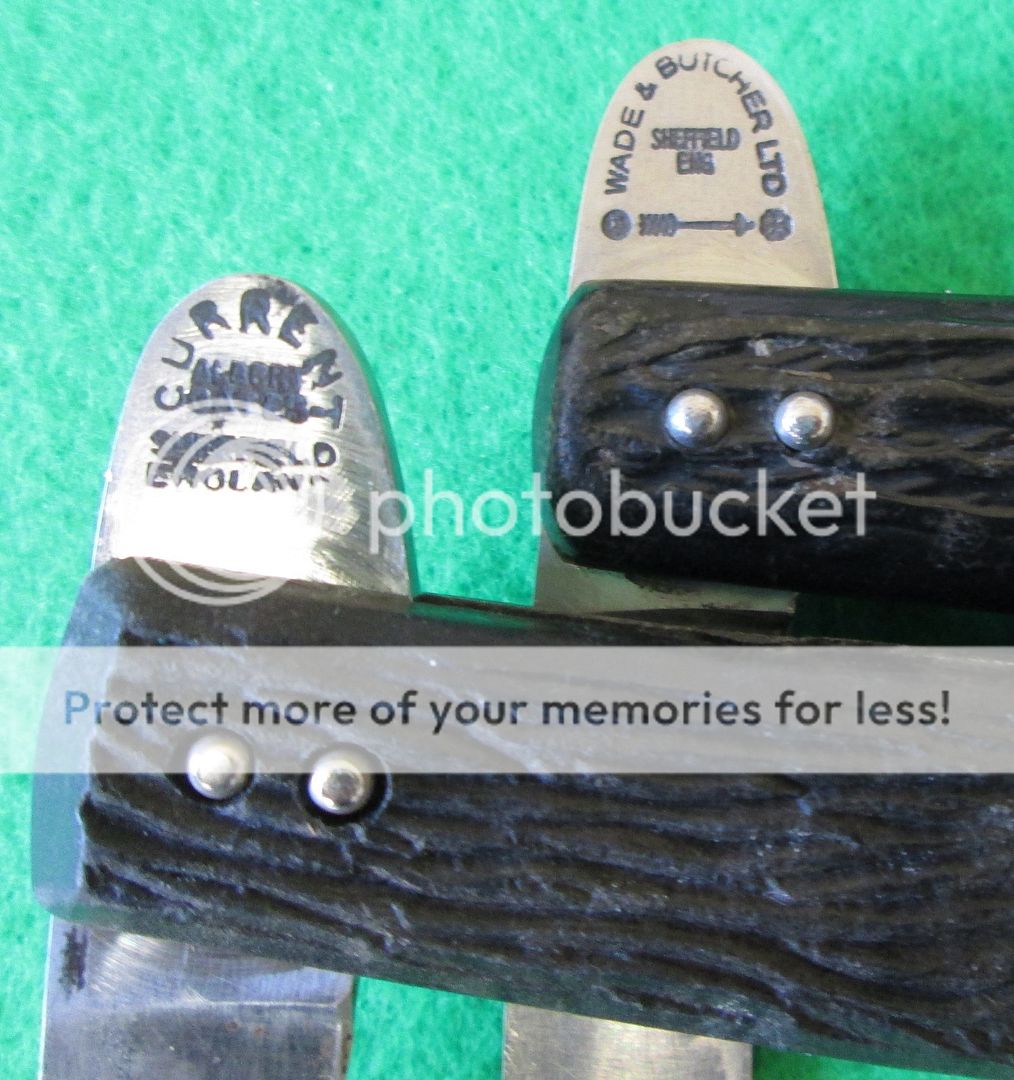- Joined
- Dec 2, 2005
- Messages
- 70,812
Here are a couple of unusual Sheffield patterns, which most posters here have probably never seen before.
The first is the Sheldon Knife, which is a traditional one-hand-opening friction folder. I last saw them on sale in the late 1970s, when they were sold as The Original One-handed Knife, and were popular with plumbers, electricians, and other workmen. You can see how the blade might lend itself to stripping wire or cutting through plastic or rubber hose.

The Sheldon Knife seemed to disappear from favour, or at least it stopped being manufactured. I can recall some years ago, discussing the pattern (the name of which I could not then remember), and nobody knew what I was talking about, not even our esteemed Sheffield experts. I was relieved when I eventually came across an example of the pattern made by Albert Oates, a firm which was last listed in directories in 1959. It was a simple knife, and must have been very inexpensive to manufacture.

Sometime later, I picked up a Wade & Butcher version. While very similar to the Oates knife, this was more nicely made, with the addition of brass liners. Wade & Butcher (or W. & S. Butcher Ltd) made stainless knives in the 1920s, but faded away in the 1940s (though the marks were still owned by razor manufacturer Durham-Duplex into the early 60s).


When I was visiting the Arthur Wright factory the other week, the gaffer there, John Maleham, showed me some Sheldon Knives, which were left over from a special order sometime before. I purchased a couple as I find the pattern interesting. The Wright knife has an etch on the blade, but does not have the stampings of the other two Sheldon Knives. Though in better condition, its similarity to the Wade & Butcher knife is striking.
Unfortunately, I havent yet been able to find a name for the unusual Pruner pattern below.
Sometime ago, ADEE posted these photos in Charlies Pruner thread:
There was more than a little scepticism that these Pruners by Taylors Eye Witness were anything other than badly-made or broken (over-bladed) knives. That was my own reaction when I saw the first knife ADEE found, (and indeed it was Stan Shaws reaction, when I showed him one of these knives yesterday). However, since posting in Charlies thread, ADEE has found other examples, also made by TEW, and a couple of weeks ago, I found this one in a York antique shop.



I think it should now be very clear that this is an actual pattern, possibly exclusive to TEW. Comet were a maker of equipment used in the mining industry, including conveyor belts, and the name also appears on older bone-handled knives I have seen online, such as these:
 [/[/IMG]
[/[/IMG]
I wonder if the knives might have been for cutting the mining belts in an emergency, or simply for when replacing them, but as yet I am still investigating. I might have to speak to some old miners
The first is the Sheldon Knife, which is a traditional one-hand-opening friction folder. I last saw them on sale in the late 1970s, when they were sold as The Original One-handed Knife, and were popular with plumbers, electricians, and other workmen. You can see how the blade might lend itself to stripping wire or cutting through plastic or rubber hose.

The Sheldon Knife seemed to disappear from favour, or at least it stopped being manufactured. I can recall some years ago, discussing the pattern (the name of which I could not then remember), and nobody knew what I was talking about, not even our esteemed Sheffield experts. I was relieved when I eventually came across an example of the pattern made by Albert Oates, a firm which was last listed in directories in 1959. It was a simple knife, and must have been very inexpensive to manufacture.

Sometime later, I picked up a Wade & Butcher version. While very similar to the Oates knife, this was more nicely made, with the addition of brass liners. Wade & Butcher (or W. & S. Butcher Ltd) made stainless knives in the 1920s, but faded away in the 1940s (though the marks were still owned by razor manufacturer Durham-Duplex into the early 60s).


When I was visiting the Arthur Wright factory the other week, the gaffer there, John Maleham, showed me some Sheldon Knives, which were left over from a special order sometime before. I purchased a couple as I find the pattern interesting. The Wright knife has an etch on the blade, but does not have the stampings of the other two Sheldon Knives. Though in better condition, its similarity to the Wade & Butcher knife is striking.
Unfortunately, I havent yet been able to find a name for the unusual Pruner pattern below.
Sometime ago, ADEE posted these photos in Charlies Pruner thread:
There was more than a little scepticism that these Pruners by Taylors Eye Witness were anything other than badly-made or broken (over-bladed) knives. That was my own reaction when I saw the first knife ADEE found, (and indeed it was Stan Shaws reaction, when I showed him one of these knives yesterday). However, since posting in Charlies thread, ADEE has found other examples, also made by TEW, and a couple of weeks ago, I found this one in a York antique shop.



I think it should now be very clear that this is an actual pattern, possibly exclusive to TEW. Comet were a maker of equipment used in the mining industry, including conveyor belts, and the name also appears on older bone-handled knives I have seen online, such as these:

I wonder if the knives might have been for cutting the mining belts in an emergency, or simply for when replacing them, but as yet I am still investigating. I might have to speak to some old miners




